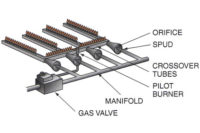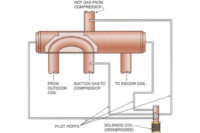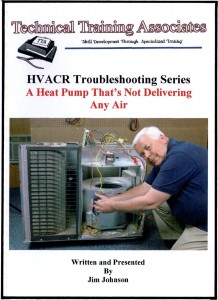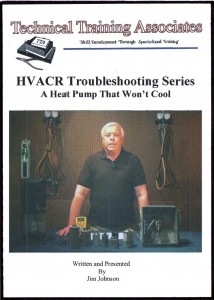Bob is a service technician who is well trained and nationally certified. However, he has sometimes suffered from the same confusion that all technicians occasionally do — the facts that he gathers may or may not point to the obvious cause of the problem or the best solution. But Bob has had something that no one else has. He recalled his long-time HVACR mentor and imagines him accompanying him as “Btu Buddy,” someone who reminded him to take time to stop and think before rushing to judgment, helping keep him on the right track, even with facts that are confusing.
Now, Bob’s company has promoted him to help train a new employee, right out of a school specializing in HVAC, just like Bob was. Bob is now Tim’s Btu Buddy. Tim is anxious to travel with Bob. Tim realizes that he is right out of school, with the theory and lab work that he accomplished in school, but still needs help. He knows that he worked with many of the components of the systems in the school, under ideal conditions with good light and air conditioning. Now it is into the field, sometimes under the house with poor lighting, or out on the rooftop in the sun, where the real action is. He is naturally and normally reluctant, but he has Bob to help guide him.
Bob and Tim had just finished a routine service call on a house with a gas furnace for the heating system. They were standing and talking to the housewife when she asked them a question: “Our house is very dry in the winter time, and the humidity must be very low. How can we put a system in this house to keep the whole house at a higher humidity level?”
Bob said, “We will check the humidity in your house in a few minutes and see what level it is staying at. But let me explain a couple of humidifying systems that are used in houses typical to yours. You have one air handler to heat the whole house so a central humidifying system can be installed on this gas furnace to furnish extra humidity to the entire house. There are several ways it can be accomplished and we will see which one fits the description of what you have to do. Whatever we do, we’re going to have to use water and that water will have to be turned to water vapor and allowed back into the systems air. Any time we have water around the system, we have to be conscious of algae and mold. So some of these systems will have to be serviced routinely, usually once a year. When vaporizing water, we always have to be aware of any mineral content in the water. If you have very hard water with a lot of minerals, there will be a lot of mineral residue left over after vaporizing the water. Do you notice minerals left in your pans when you boil water, and does your coffee pot have minerals left behind in it when you make coffee over time?”
The housewife said, “No we don’t seem to have a lot of minerals in our water. The toilet bowl and tank don’t seem to have minerals build up in them. Our coffee pot and pans don’t seem to have mineral buildup. In the wintertime I keep a kettle full of water on the stove for making tea and instant coffee. I heat it up two or three times a day and I have never noticed any mineral buildup in the kettle.”
Bob then said, “There are several ways to evaporate moisture into the heated air:
“1. Warm air can be circulated over a surface that has water spread out on the surface. In this case the water surface has to be great for the warm air to pass over it and evaporate the moisture into the air going back into the conditioned space. This method would use either a rotating drum in the system attached to the discharge plenum of the furnace and have a small duct that would go right back into the return air. It would use the expanded surface and the heated air from the gas furnace to evaporate the moisture and suck the moisture laden air right back into the return air side where it would be reheated and sent out into the structure. The expanded surface may be in the form of plates that absorb water causing it to wick up into the air stream, a rotating drum that rotates through the water reservoir, or a distribution system that drips water down through a mesh wire and the air stream passes through it to vaporize water (Figure 1).
“2. Another method would be to vaporize the water in a pan inside the furnace plenum using electric heat or ultraviolet lights to vaporize the water. The advantage of ultraviolet light to vaporize the water is that it minimizes the chance of any algae or mold ever forming in the pan (Figure 2).
“3. There is another type of humidifier that’s uses a very fine nozzle to spray water vapor into the warm air in the furnace plenum (Figure 3).
“4. Another type of humidifier uses a rotating slinger ring that vaporizes water and pushes it into the plenum (Figure 4).
“All of these systems must have a float system to maintain the water level during operation.
“Any of these systems will work well for you. We just need to give you a quote on a couple of them and let you decide which one you like. We will make some notes and simple drawings and turn it over to sales who will contact you for the quotes.”
Bob and Tim went downstairs to look over the system and see how they could install the humidifying system on this type of furnace.
Tim said, “I like the idea of the spray nozzle. It seems simple with not very much maintenance. The unit seems to be small and doesn’t take up a lot of space.”
Bob said, “I like that system also but the furnace plenum on this furnace is very small and the first duct outlet comes right off of the furnace plenum. There is not much room for vaporization to take place between the top of the furnace and the walls of the plenum. It is an upflow furnace with a plenum on top and then the duct turns in different directions to go to the various zones. I don’t think we have enough room. Let’s read the specifications.”
Tim looked over the specifications and said, “You’re right that this is a very short plenum and this system requires about three feet of ductwork for the vaporized water stream to be absorbed into the air stream. The water going to the nozzle is cold water right out of the house system. If it were heated, it would have a better chance. But that doesn’t seem feasible. If the vaporized water stream hits any of the ductwork, it will immediately turn back to a liquid and run down the inside of the duct and be a potential for algae and mold.”
Bob then said, “There seems to be room on the hot air plenum to mount one of the recirculating type systems and take the outlet to it back to the return air which is close by. That would be a fairly simple installation also.”
Tim said, “How will we control the humidity level in the house and when the humidifier operates? We certainly do not want it to operate during the summer cycle.”
Bob explained, “Whatever system we use, we will need to interlock it with the fan to make sure that the fan is always running when the humidifier system is running and we will have to install a humidistat to detect the humidity level.”
Tim then asked, “What is the optimum humidity level in a house in the wintertime and why?”
Bob explained, “The optimum humidity level in the house would be somewhere between 40 percent and 60 percent. It’s not likely that you would ever have more than 60 percent in a house in the wintertime and it is very likely that you would have humidity levels lower than 40 percent. When the humidity gets too low in a house, the wood in the house will begin to shrink over time, wooden chairs are likely to loosen at the joints, doors will shrink, and your breathing passages will begin to dry up and possibly cause nasal problems such as bleeding noses. It’s not unusual at all for a house to have humidity levels down around 10 percent in the wintertime. Many people run baby type humidifiers in their bedrooms at night to keep the humidity up while sleeping. These humidifiers have a rotor inside that slings water around and round until it gets a vapor coming out of a nozzle. The reservoir must be refilled often so they can be a good bit of trouble.”
They checked the humidity level in the house and found it to be 15 percent. They reported it to the homeowner and she said, “That is desert low humidity. Let’s fix that.”
Bob explained that sales would be in touch soon. They had the figures and drawings for sales.
As they were driving away, Tim said, “I didn’t realize how many varieties there were of humidifier systems. There seems to be one for any situation.”
Bob agreed, “Industry has done a good job of developing these humidifying systems. We will get a small commission for referring sales to this job and that won’t hurt either.”
Publication date: 3/21/2016
Want more HVAC industry news and information? Join The NEWS on Facebook, Twitter, and LinkedIn today!














